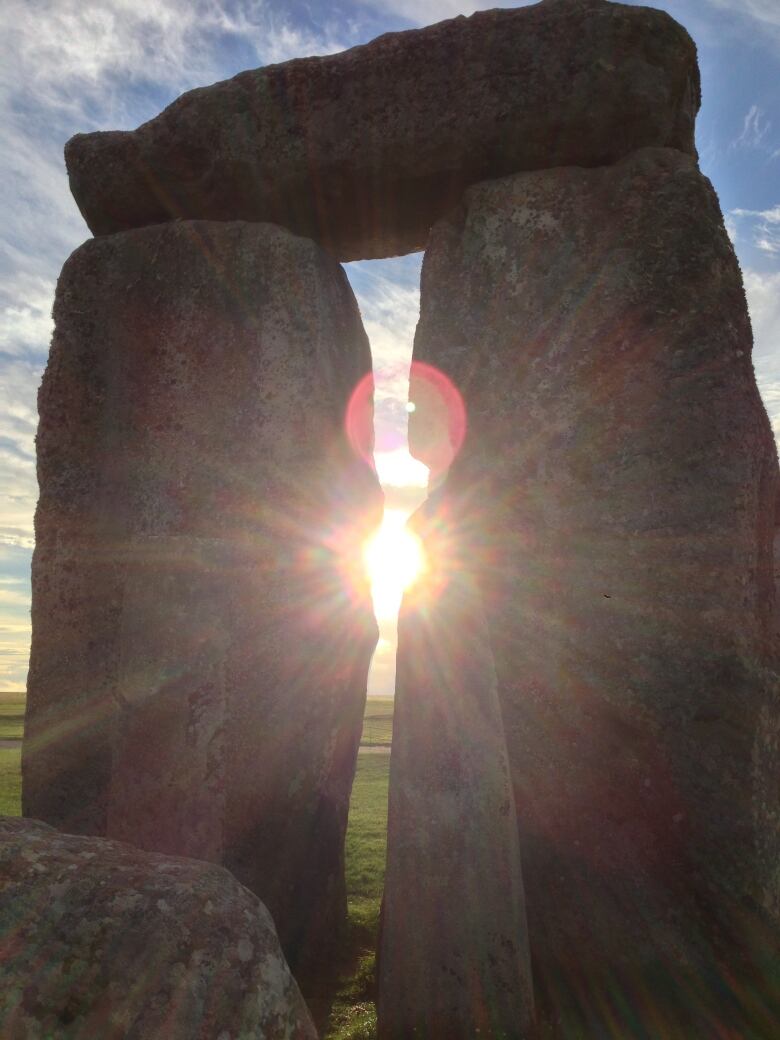Stonehenge Hidden Landscapes Project reveals buried ancient monuments
Stonehenge Uncovered reveals details on CBC's The Nature of Things, Oct. 9 at 8 p.m.
Archeologists at Stonehenge have found more than a dozen previously unknown ancient monuments in and around the iconic ring of massive stones, revealing surprising new insights about the people who built it.
The Hidden Landscapes Project, an international team of archeologists, spent four years using devices such as ground-penetrating radar to scan and map buried artifacts and monuments in the 14.5 square kilometres in and around Stonehenge. The UNESCO World Heritage Site is located about 130kilometres southwest of London.
"'New monuments have been revealed, as well as new types of monument that have previously never been seen by archeologists," said Vincent Gaffney, an archeology professor at the University of Birmingham who is the British leader of the project. The university partnered on the project with theLudwig Boltzmann Institute for ArchaeologicalProspectionand Virtual Archaeology, which developed many of the high-tech tools used to reveal theunderground landscape.
The discoveries anda detailed map of Stonehenge and its surroundingswere revealed at the British Science Festival Wednesday. They include:
- Totem-pole-like posts or stone structures in the Durrington Walls "super henge" a ring-shaped mound more than 1.5 kilometres in diameter.
- Prehistoric pits hundreds of years older than Stonehenge that appear astronomically aligned to point to its location at certain times of year.
- Huge burial mounds containing piles of gold and jewelry
- A massive timber building that was probably used for elaborate burial rituals.

Terence McKeown, president of Lightship Entertainment and the film's Canadian executive producer, said that before working on the film, he had the impression that Stonehenge was always an isolated monument in a landscape populated by little more than a "handful of monks."
The Hidden Landscapes Project and the new film reveal a very different picture.
'Sophisticated culture'
"What Stonehenge appears to have been was the spiritual centre of a sophisticated culture," McKeown said.
The project uncovered large burial tombs containing more gold and jewelry than graves anywhere else in Britain, indicating that the area was a cemetery for the rich and powerful. Some of the treasures found by archaeologists were made with materials and techniques originating from the European continent.
"The population around Stonehenge clearly included accomplished engineers, surgeons, artisans, and there's evidence they had close ties to Europe that advanced their skills," McKeown said.

Archeologistsalso found traces of settlements around Stonehenge.
Evidence suggests that thestone circle itself was probably used for a variety of rituals and ceremonies, including human sacrifices.
McKeown thinks some of the most important monuments uncovered by the Hidden Landscapes Project were two pits built 500 years before Stonehenge. They align with the sun on the sunrise and sunset of the summer solstice, pointing to the site where Stonehenge would later be built.
"It indicates that the land on which the stone circle sits was considered a sacred site centuries before the stone circle was erected," said McKeown.
For the film, the Vancouver visual effects company Sequence Group recreated Stonehenge and its surrounding countryside as it would have looked around the time of the people who built Stonehenge, about 5000 years ago. The scenes, which serve as backdrops for dramatic re-enactments in the film also show viewers what Stonehenge looked like when it was first built.
"Evidence shows that these big stones at Stonehenge were probably finished to be gleaming white by stonemasons," McKeown said. "It's really quite stunning."
The documentary Stonehenge Uncovered will air on Thursday, Oct. 9 at 8 p.m. on CBC-TV.













_(720p).jpg)


 OFFICIAL HD MUSIC VIDEO.jpg)
.jpg)



























































































